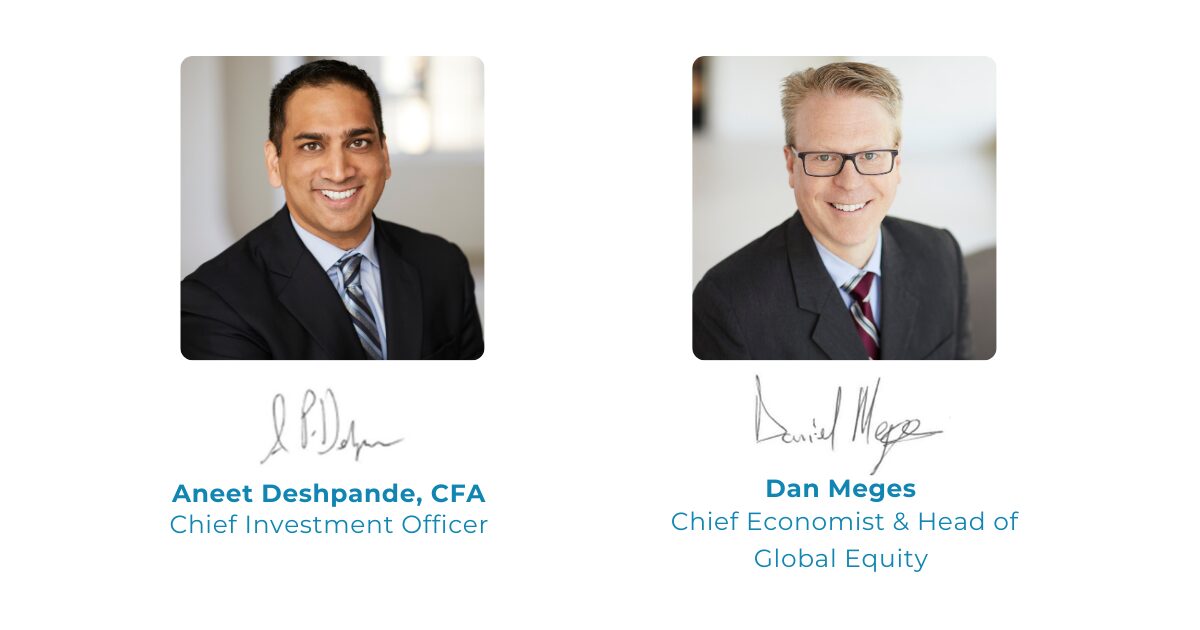OBSERVATIONS
- Markets were mixed last week with the S&P 500 gaining 0.1%, while small caps (Russell 2000) lost 1.8% and the yield on the 10-year Treasury edged up 5 basis points to end the week at 4.15%.[1]
- Small business optimism declined slightly to 98.2 in October, down from September’s 98.8 reading. The optimism index was dragged down by business owners reporting lower sales and reduced profits compared to September, but the index remained above its 52-year average of 98.[1]
- Private sector estimates of initial unemployment claims suggest that claims were roughly flat last week at 226k, which is down marginally from the previous week’s 228k initial unemployment claims estimate.[1]
EXPECTATIONS
- Expectations for the next move by the Federal Reserve in terms of its main policy rate are not far from a coin-toss. The Fed Fund Futures for December indicate about a 43% probability that the Fed cuts rates by 25 basis points at its mid-December meeting. However, Boston Fed president Susan Collins—who has never dissented from an FOMC decision—noted last week that she sees “several reasons to have a relatively high bar for additional easing in the near term.”[1]
- It was a quiet week for earnings reports last week—only NVIDIA, which reports this week, is of sufficient size to materially change the S&P 500’s Q3 earnings picture—and now about 92% of the S&P 500 has reported and, thus far, 82% of companies have issued a positive earnings surprise, which is above the 5-year average (78%) and 10-year average (75%). The blended earnings growth for Q3 is currently 13.1% year-over-year.[2]
ONE MORE THOUGHT:
The record long 43-day government shutdown ended last week with close votes in both the House and the Senate to pass a continuing spending resolution that funds the Agriculture Department (including SNAP benefits), Veteran Affairs and Defense, and the Legislative Branch (staffers) through the end of the government’s fiscal year (September-2026). It also provides funding for the rest of the government until the end of January. While the government re-opening is welcome news, Congress will still have to pass nine other appropriations bills before the end of January or a partial shutdown could once again loom. However, the deal to re-open the government includes the opportunity to vote—at least in the Senate—on a bill to extend healthcare subsidies enacted after the COVID pandemic that has been a key sticking point for Senate Democrats to pass other funding provisions. Given this, there is reason to be hopeful that 2026 may not entail any further disruptions to government services. This will cheer holiday travelers who would have otherwise faced delayed and cancelled flights as TSA and FAA flight controller staffing levels faced rising absenteeism. The other big beneficiary—apart from all other furloughed government workers—will be markets which will finally get to see the economic data from the past several months. Some data, such as the September jobs report, which was originally set to be published on 3-Oct, will likely be published this week—see Chart of the Week. However, other data will likely take longer to compile based upon the experience in 2013 when the Bureau of Labor Statistics (BLS) was also shuttered during a shutdown. However, the 2013 shutdown lasted only 16 days and only delayed the launch of some surveys. This time, for instance, the survey that should have been issued in mid-October to estimate job creation and the unemployment rate never happened. This means that the BLS may have to hope that households and businesses can remember their employment situation from mid-Oct when they are finally given a survey in the coming weeks—assuming they opt to send it at all. In addition to the risk of the data being a bit noisy, it might paint a different picture as to the state of the economy than what was gleaned by private sector substitute data. Only time will tell how quickly the BLS data will emerge and if it will confirm or challenge the consensus view of a healthy economy and a stable labor market.


[1] Bloomberg LP 11/14/2025
[2] FactSet Earnings Insight 11/14/2025
Information provided in this article is general in nature, is provided for informational purposes only, and should not be construed as investment advice. These materials do not constitute an offer or recommendation to buy or sell securities. The views expressed by the author are based upon the data available at the time the article was written. Any such views are subject to change at any time based on market or other conditions. Clearstead disclaims any liability for any direct or incidental loss incurred by applying any of the information in this article. All investment decisions must be evaluated as to whether it is consistent with your investment objectives, risk tolerance, and financial situation. You should consult with an investment professional before making any investment decision. Performance data shown represents past performance. Past performance is not an indicator of future results. Current performance data may be lower or higher than the performance data presented. Performance data is represented by indices, which cannot be invested in directly.